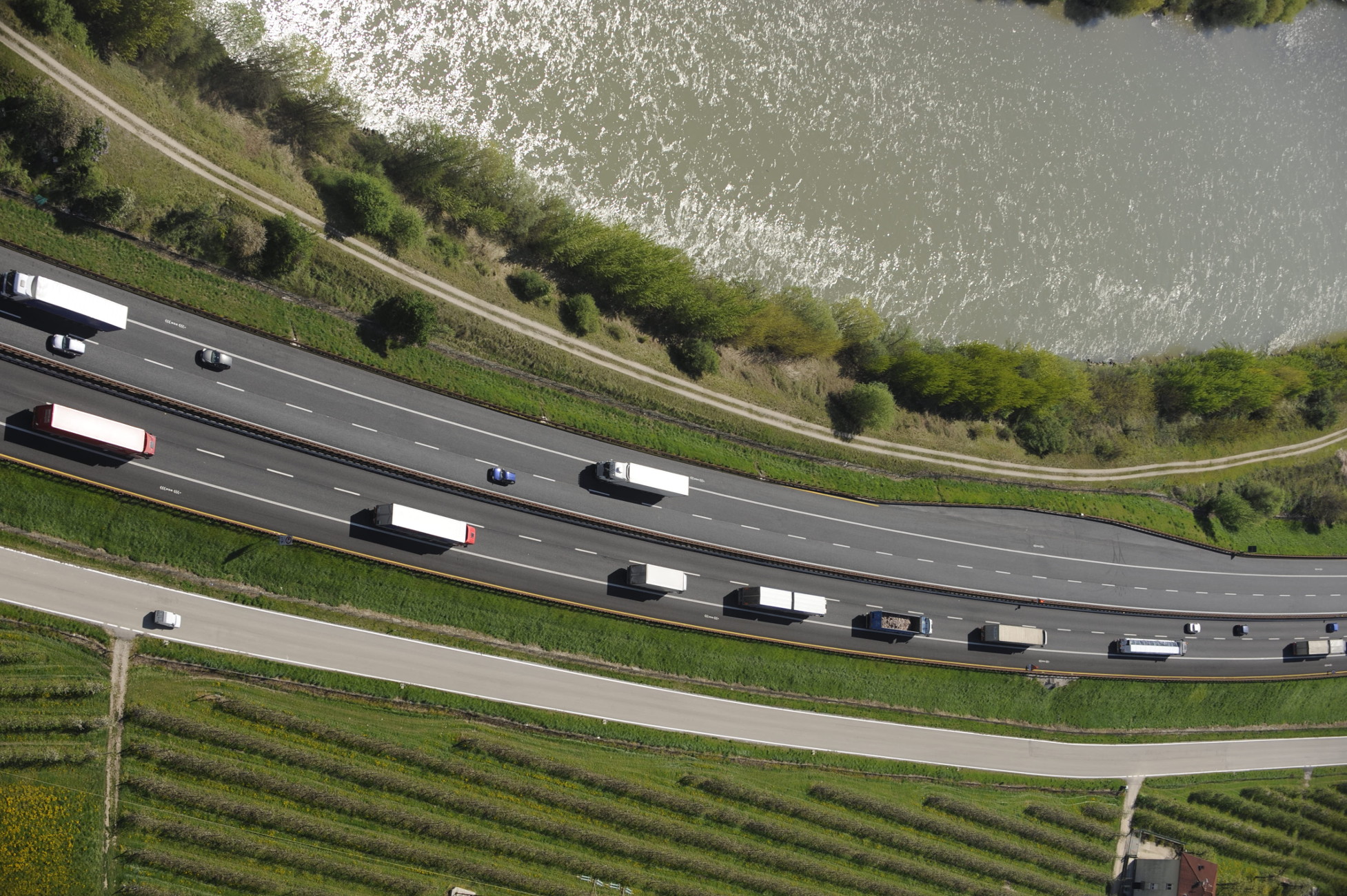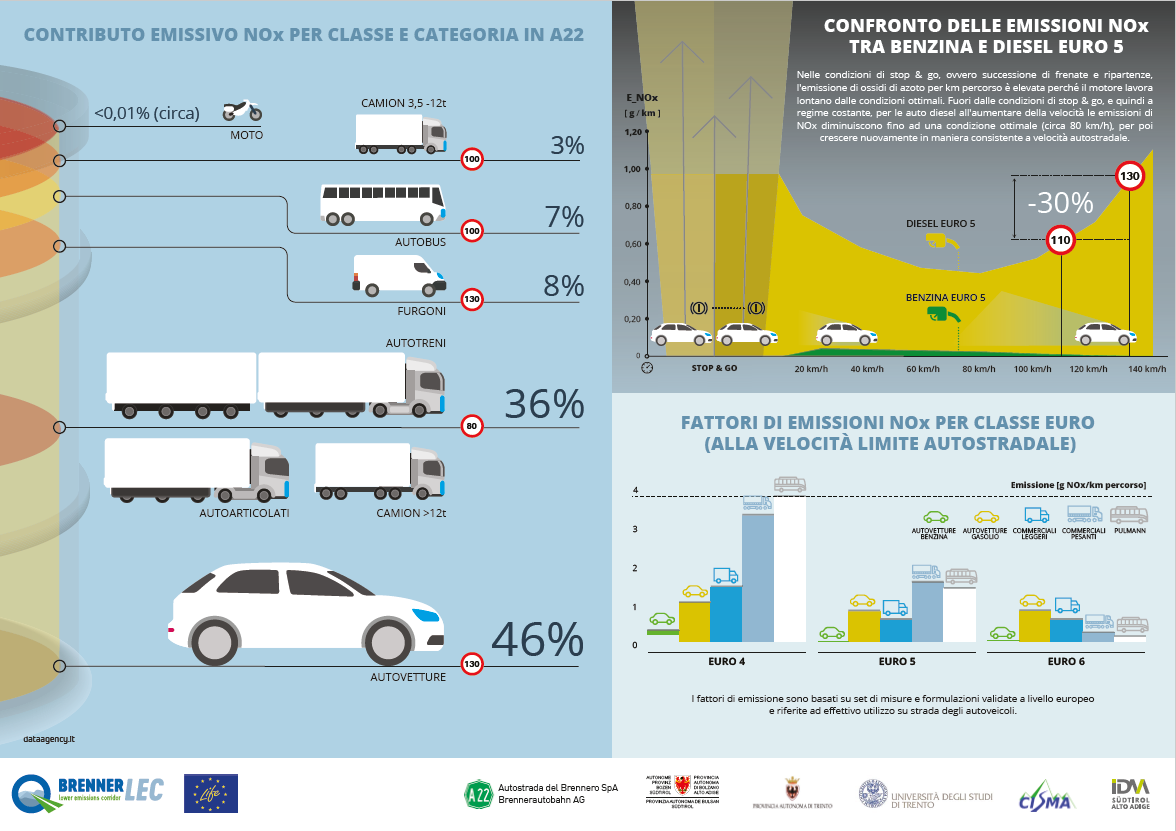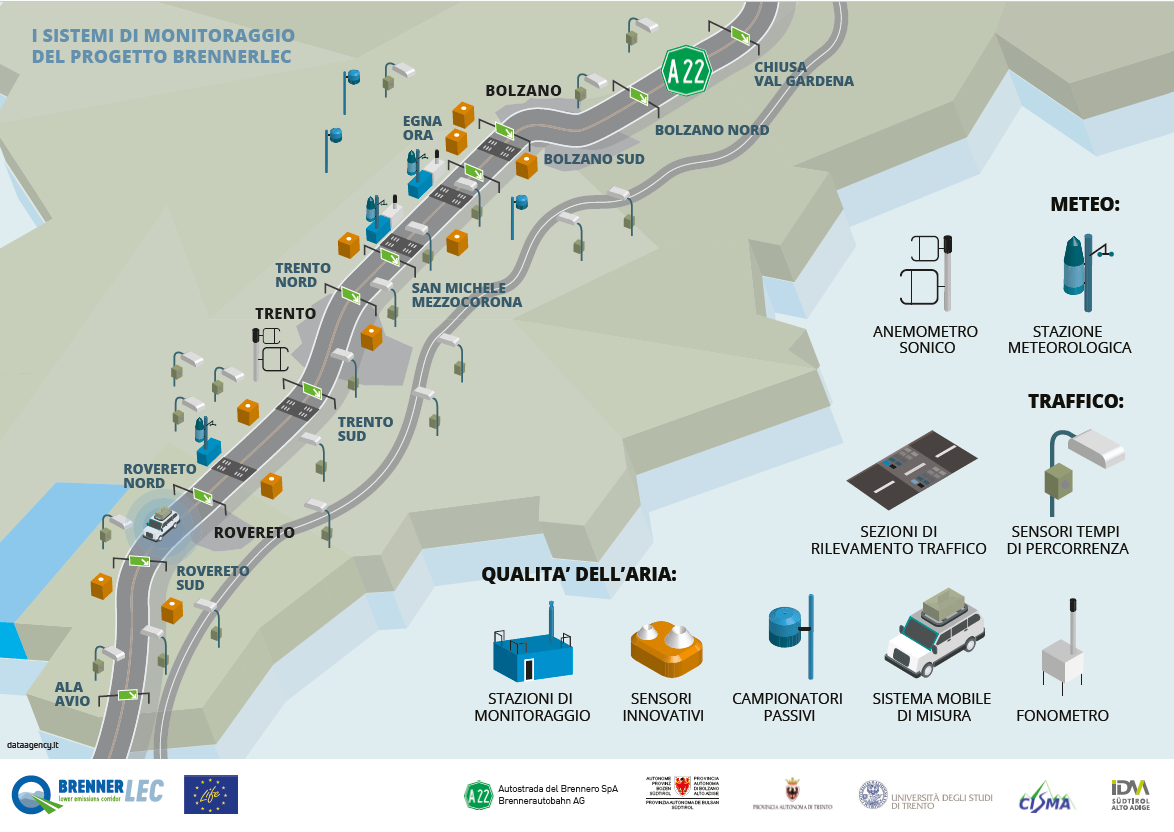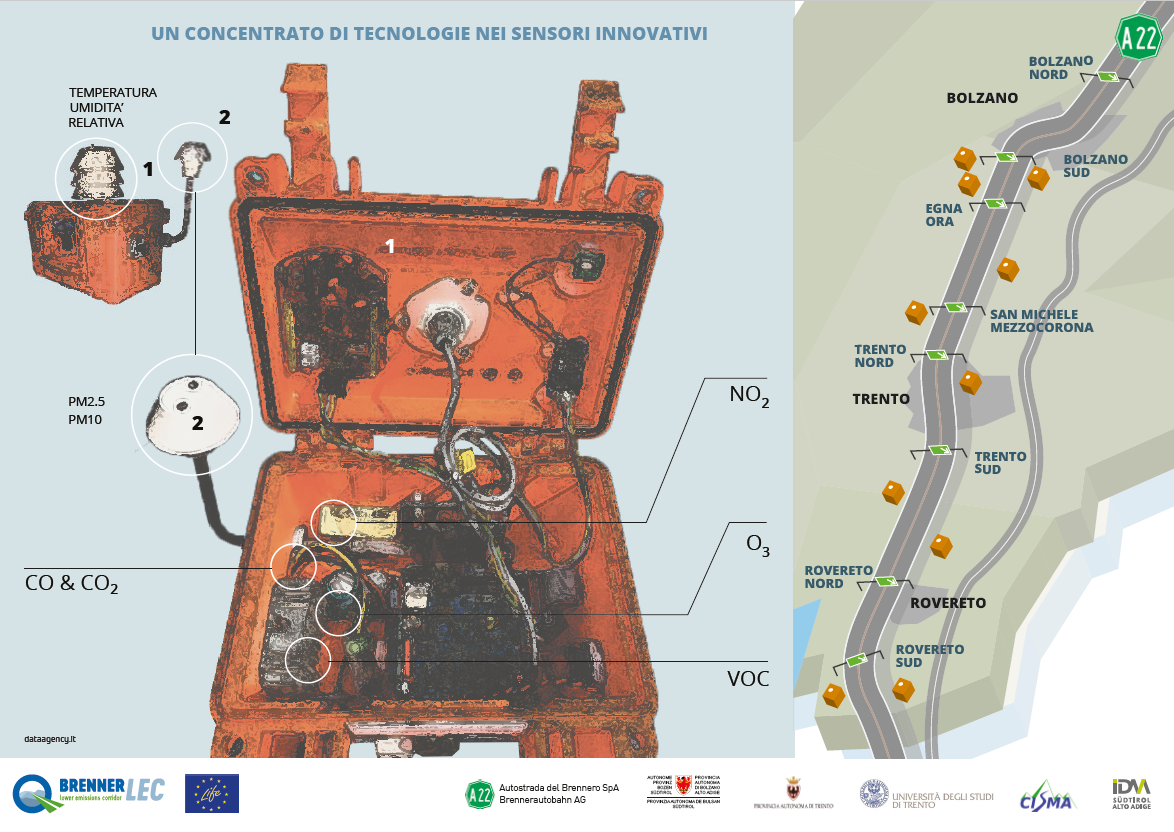The BrennerLEC project operates in the context of a sensitive area such as the Alps and aims at creating a Lower Emission Corridor (LEC) along the Brenner motorway route in order to achieve a clear environmental benefit in the field of air quality and climate protection, as well as noise pollution reduction.
These goals will be pursued by implementing and validating a number of actions, including:
- dynamic management of motorway capacity (BLEC-ENV) through speed limits reduction in the case relevant vehicle flows and temporary emergency lane usage due to motorway’s saturation are expected;
- dynamic management of maximum speed allowed (BLEC-AQ) for light-duty vehicles depending on current and predicted air quality conditions;
- integrated management of information systems for car drivers (BLEC-LEZ) across major towns in order to suggest them the best routes.
The project will be applied in a pilot area of the A22 motorway where main urban areas of the region lie. It aims to provide a contribution in developing environmental policies, also thanks to the operational ways by which these measures will be implemented. The involved motorway sections and corresponding expected benefits are:
- BLEC-ENV (section of approx. 90 km from Bolzano Nord to Rovereto Sud) - reduction of atmospheric emissions up to a maximum of 40% for light-duty vehicles and up to 60% for heavy-duty vehicles during conditions of maximum traffic saturation;
- BLEC-AQ (section of approx. 20 km from Egna to San Michele) - reduction of passengers cars emissions by approx. 25% for NOx and 20% for CO2. Reduction of overall emissions by approx. 8% for NOx and 6.4% for CO2, with a reduction by approx. 5% in NO2 mean concentrations. Noise reduction by 1-2 dB (A) at the receptor;
- BLEC-LEZ (way in and way out for the cities of Bolzano, Trento and Rovereto) - the expected reductions are of the same order of magnitude as those expected in the BLEC-ENV section.
BrennerLEC also aims to achieve the best possible compromise between environmental benefits, quality and safety of the service, and maximum acceptance degree by the users. As such, an intense monitoring activity is foreseen towards different directions: environmental (air quality and noise), transportation (traffic data), and social impact of the measures.
These efforts also include information initiatives for citizens, associations, economic categories and local authorities. Dissemination of the results requires that national and international stakeholders are involved, including the Ministry of the Environment, the Ministry of Transportation, EUREGIO, ASFINAG, as well as regional environmental protection agencies such as those from Veneto, Lombardy and Emilia Romagna.
Another goal of the project is to develop guidelines for extending these measures to the Alpine section of the A22 motorway between Brenner and Affi, and to recommend - in collaboration with ASFINAG - their application to the entire international route of the Brenner motorway (Kufstein-Affi).
The most innovative aspect of the project is the development of a model to forecast meteorological, environmental and road traffic conditions. This model will support a proactive decision support system for optimal management of vehicular flows and for reduction of environmental impacts over an area particularly sensitive such as that of the Alpine valleys.





